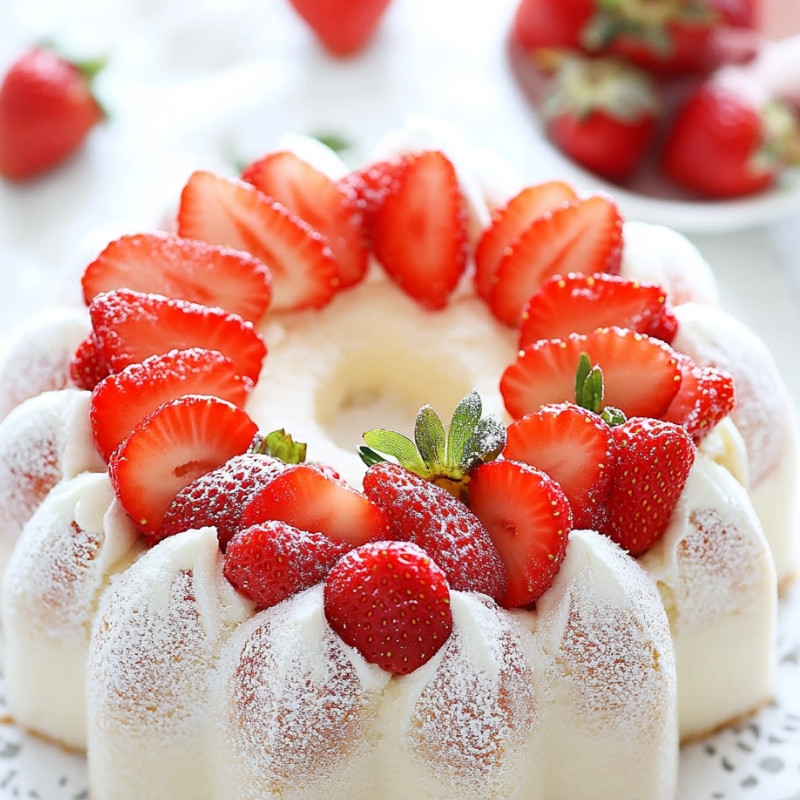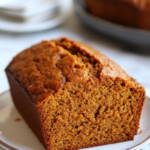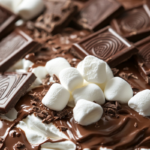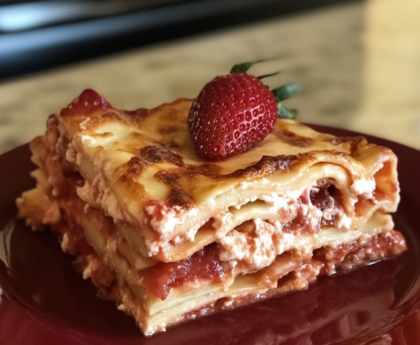Introduction
This classic creamy cheesecake recipe is a timeless dessert, perfect for any occasion. With a smooth and rich texture and a perfect balance of sweet and tangy flavors, it’s sure to be a hit with family and friends.
Detailed Ingredients with Measures
– 225g graham crackers, crushed
– 115g unsalted butter, melted
– 900g cream cheese, softened
– 250g granulated sugar
– 3 large eggs
– 125 ml sour cream
– 60 ml heavy cream
– 1 tbsp vanilla extract
– 15 ml fresh lemon juice
– 15g all-purpose flour
Directions
1. Preheat your oven to 160°C and prepare a 23 cm springform pan by lining the bottom with parchment paper.
2. In a mixing bowl, combine the crushed graham crackers and melted butter until the mixture resembles wet sand. Press the mixture firmly into the bottom of the prepared pan to form the crust. Set aside.
3. In a large bowl, beat the softened cream cheese and granulated sugar together until smooth and creamy.
4. Add the eggs, one at a time, mixing well after each addition.
5. Stir in the sour cream, heavy cream, vanilla extract, and lemon juice until fully combined.
6. Add the flour and mix until just incorporated, being careful not to overmix.
7. Pour the cheesecake batter over the prepared crust, smoothing the top with a spatula.
8. Bake the cheesecake for 50-60 minutes, or until the edges are set and the center still has a slight wobble.
9. Turn off the oven and crack the oven door open slightly. Allow the cheesecake to cool in the oven for 1 hour to prevent cracking.
10. Refrigerate the cooled cheesecake for at least 4 hours or overnight for best results before serving.
Prep Time
20 minutes
Cook Time, Total Time, Yield
Cook Time: 60 minutes
Total Time: 1 hour 20 minutes
Yield: 12 servings
Detailed Directions and Instructions
Step 1: Preheat the Oven
Preheat your oven to 160°C and prepare a 23 cm springform pan by lining the bottom with parchment paper.
Step 2: Make the Crust
In a mixing bowl, combine the crushed graham crackers and melted butter until the mixture resembles wet sand. Press the mixture firmly into the bottom of the prepared pan to form the crust. Set aside.
Step 3: Prepare the Cheesecake Filling
In a large bowl, beat the softened cream cheese and granulated sugar together until smooth and creamy.
Step 4: Add Eggs
Add the eggs, one at a time, mixing well after each addition.
Step 5: Incorporate Additional Ingredients
Stir in the sour cream, heavy cream, vanilla extract, and lemon juice until fully combined.
Step 6: Add Flour
Add the flour and mix until just incorporated, being careful not to overmix.
Step 7: Pour the Batter
Pour the cheesecake batter over the prepared crust, smoothing the top with a spatula.
Step 8: Bake the Cheesecake
Bake the cheesecake for 50-60 minutes, or until the edges are set and the center still has a slight wobble.
Step 9: Cooling Process
Turn off the oven and crack the oven door open slightly. Allow the cheesecake to cool in the oven for 1 hour to prevent cracking.
Step 10: Refrigerate
Refrigerate the cooled cheesecake for at least 4 hours or overnight for best results before serving.
Notes
Crust Texture
Ensure that the crust mixture is evenly distributed and pressed down firmly to avoid crumbling when sliced.
Egg Temperature
For best results, use eggs that are at room temperature to ensure smoother incorporation into the batter.
Preventing Cracks
Avoid overmixing the batter as it can introduce air, which may cause the cheesecake to crack during baking.
Serving Suggestions
Serve with fresh fruit, whipped cream, or a drizzle of chocolate or caramel sauce for added flavor.
Storage Instructions
Keep the cheesecake covered in the refrigerator for up to 5 days. It can also be frozen for up to 2 months; thaw in the refrigerator before serving.
Storage Instructions
Refrigeration
Store the cheesecake in the refrigerator, covered with plastic wrap or placed in an airtight container. It can be kept for up to 5 days.
Freezing
For longer storage, cheesecake can be frozen. Wrap it tightly in plastic wrap, followed by aluminum foil, or place in a freezer-safe container. It can remain frozen for up to 2 months. To serve, thaw in the refrigerator overnight before enjoying.
Serving Suggestions
Decoration
Serve the cheesecake topped with fresh berries, a drizzle of chocolate or caramel sauce, or whipped cream for an added touch of indulgence.
Accompaniments
Pair with a cup of coffee or tea for a delightful dessert experience. You can also serve alongside a fruit compote or citrus sorbet for a refreshing contrast.
Nutritional Information
Per Serving (1 slice, based on 12 servings)
– Calories: 400
– Total Fat: 28g
– Saturated Fat: 17g
– Cholesterol: 108mg
– Sodium: 200mg
– Total Carbohydrates: 32g
– Dietary Fiber: 1g
– Sugars: 22g
– Protein: 6g
Ingredient Substitutions
Graham Crackers
Use digestive biscuits, oreo cookies (omit additional sugar), or almond flour for a gluten-free option.
Cream Cheese
Neufchâtel cheese can be used for a lower fat option, or a vegan cream cheese can substitute for a dairy-free version.
Sour Cream
Plain yogurt (Greek or regular) works as a suitable alternative for tanginess and creaminess.
Heavy Cream
Whipping cream or a dairy-free alternative, such as coconut cream, can replace heavy cream.
Granulated Sugar
Sugar substitutes like stevia or erythritol can be used for a low-sugar version, noting that sweetness levels may vary.
All-Purpose Flour
Gluten-free flour blends can replace all-purpose flour for those with gluten sensitivities.
Cook techniques
Preparing the Crust
To create a well-formed crust, ensure that the graham cracker mixture is thoroughly mixed with melted butter so that each crumb is coated. Press the mixture firmly and evenly into the bottom of the springform pan to prevent any gaps.
Achieving Smooth Cream Cheese Mixture
To avoid lumps, make sure the cream cheese is at room temperature before mixing. Beat it thoroughly until smooth before gradually adding sugar and other ingredients.
Incorporating Eggs
When adding eggs one at a time, mix only until just combined. Overmixing can introduce too much air, resulting in cracks during baking.
Testing for Doneness
The cheesecake should be baked until the edges are set with a slight jiggle in the center. This indicates that it will finish cooking as it cools.
Cooling the Cheesecake
Allowing the cheesecake to cool in the oven with the door slightly ajar for an hour helps to prevent sudden temperature changes, reducing the chances of cracks forming on the surface.
Chilling Time
For the best texture and flavor, refrigerate the cheesecake for at least 4 hours or overnight. This allows the flavors to meld and the cheesecake to set properly.
FAQ
Can I use a different type of crust?
Yes, you can use other types of cookies such as digestive biscuits, Oreo cookies, or even a classic pastry crust if you prefer.
Is it necessary to use sour cream?
Sour cream adds creaminess and a tangy flavor that complements the sweetness of the cheesecake. You can substitute it with Greek yogurt if needed.
What can I do if my cheesecake cracks?
If your cheesecake cracks, it could be due to overmixing or sudden temperature changes. Always let it cool gradually in the oven and avoid overbeating the mixture.
How long can I store cheesecake?
Homemade cheesecake can be stored in the refrigerator for up to 5 days. Make sure to cover it tightly to prevent it from absorbing odors.
Can I freeze cheesecake?
Yes, you can freeze cheesecake. Wrap it tightly in plastic wrap and then in aluminum foil. It can be stored in the freezer for up to 3 months. Thaw in the refrigerator before serving.
Conclusion
This classic creamy cheesecake is a delightful and indulgent dessert that appeals to all palates. Its rich texture combined with the perfect sweetness and tanginess creates an unforgettable dessert experience. Whether for celebrations or a simple family gathering, this cheesecake is sure to impress and become a favorite.
Fruit Topped Cheesecake
Add a layer of fresh fruits like strawberries, blueberries, or raspberries on top for a burst of flavor and color.
Chocolate Swirl Cheesecake
Incorporate melted chocolate into the batter before baking for a decadent twist on the classic.
Pumpkin Cheesecake
Mix in pumpkin puree and spices like cinnamon and nutmeg for a seasonal treat during the fall.
Lemon Blueberry Cheesecake
Combine fresh blueberries with a hint of lemon zest in the cheesecake batter for a refreshing flavor.
Caramel Pecan Cheesecake
Top the cheesecake with caramel sauce and toasted pecans for a rich and nutty delight.
Matcha Green Tea Cheesecake
Add matcha powder into the cheesecake mixture for a unique flavor and vibrant green color.
Peanut Butter Cheesecake
Incorporate creamy peanut butter into the batter for a luscious and nutty version of cheesecake.
Oreo Cheesecake
Fold crushed Oreo cookies into the cheesecake batter and use more cookies for a delicious crust.
Coconut Lime Cheesecake
Introduce coconut cream and fresh lime juice for a tropical flair that brightens the taste.
Mini Cheesecakes
Bake individual cheesecakes in muffin tins for easy serving and a fun presentation.




